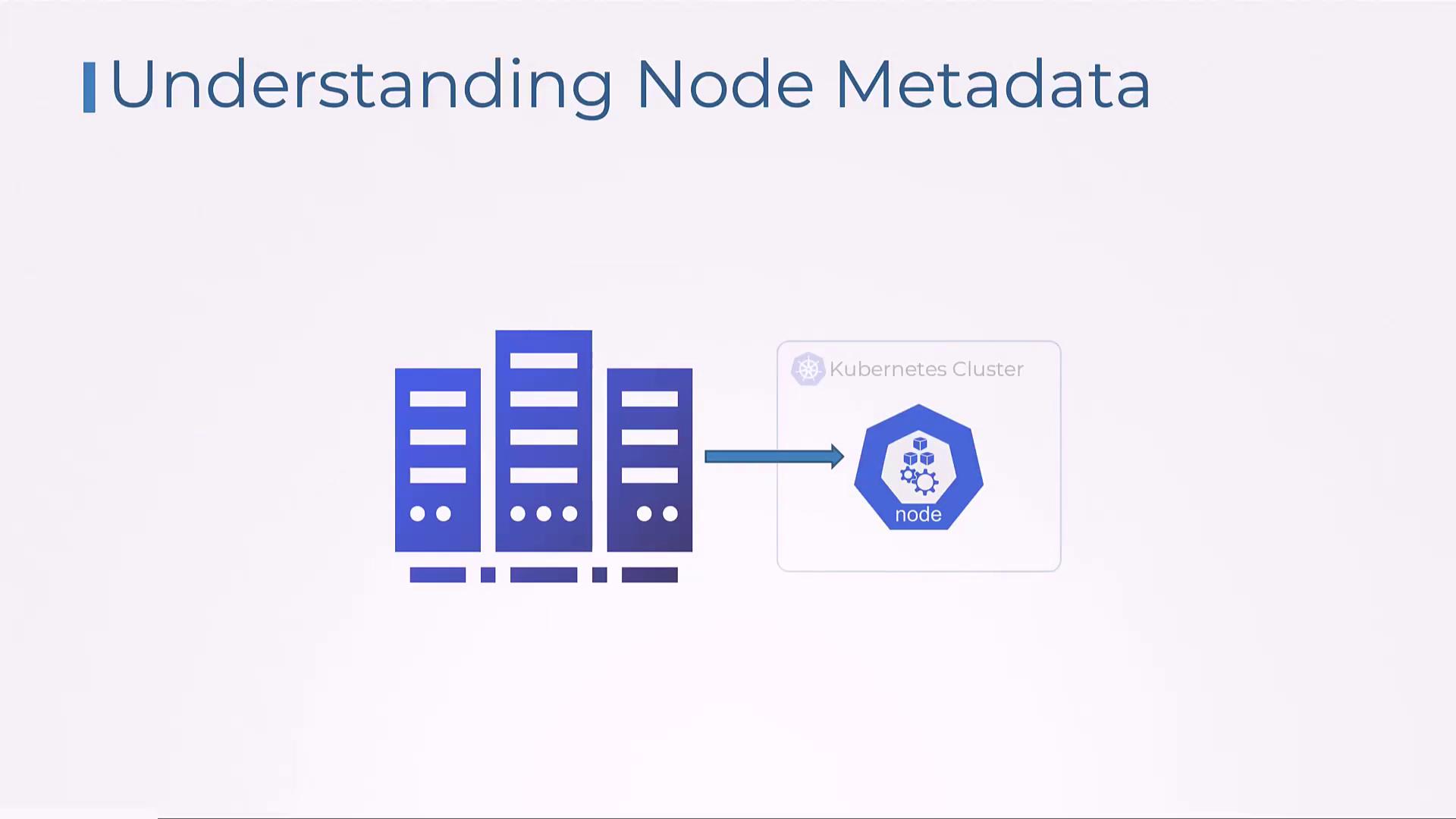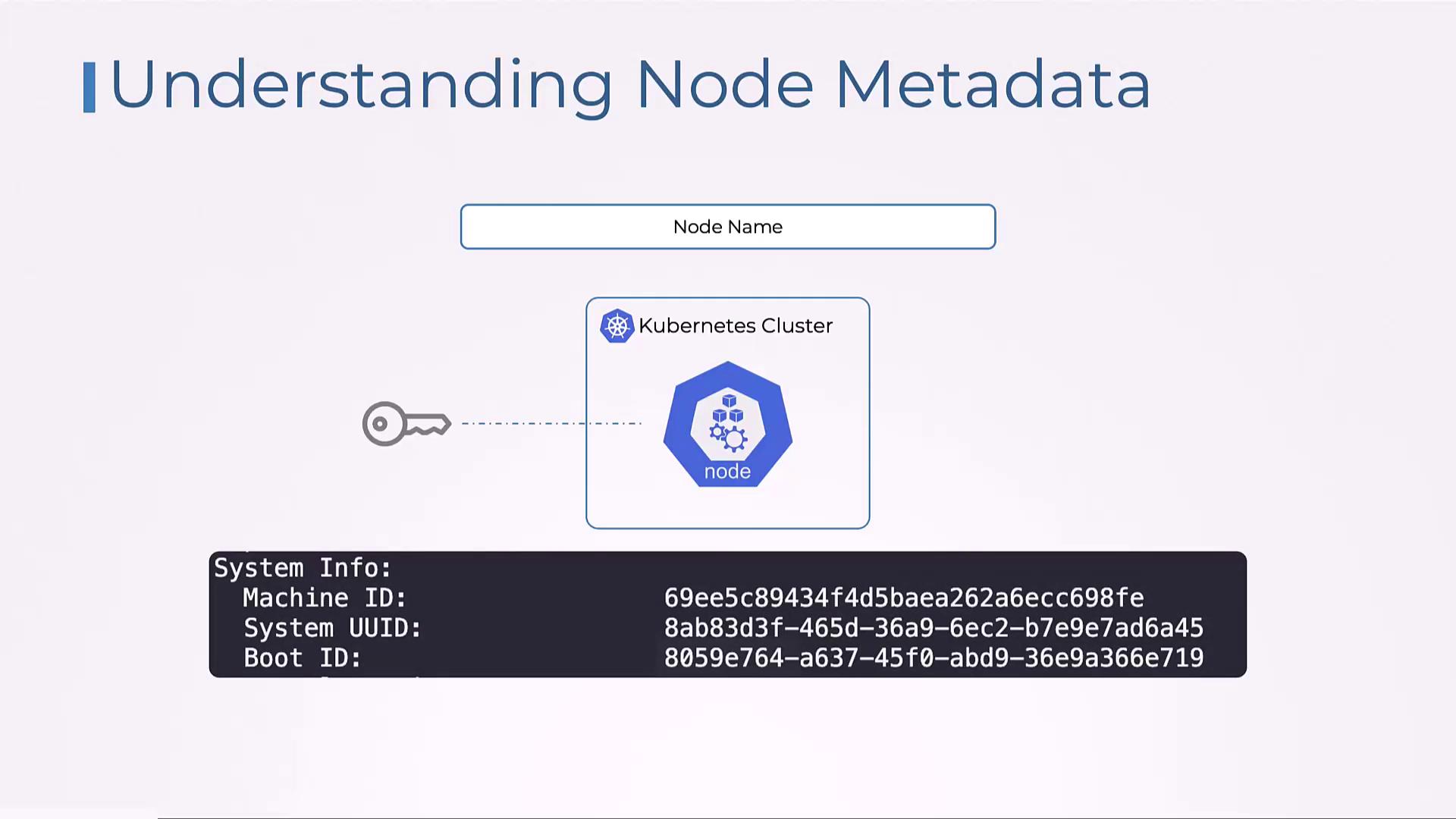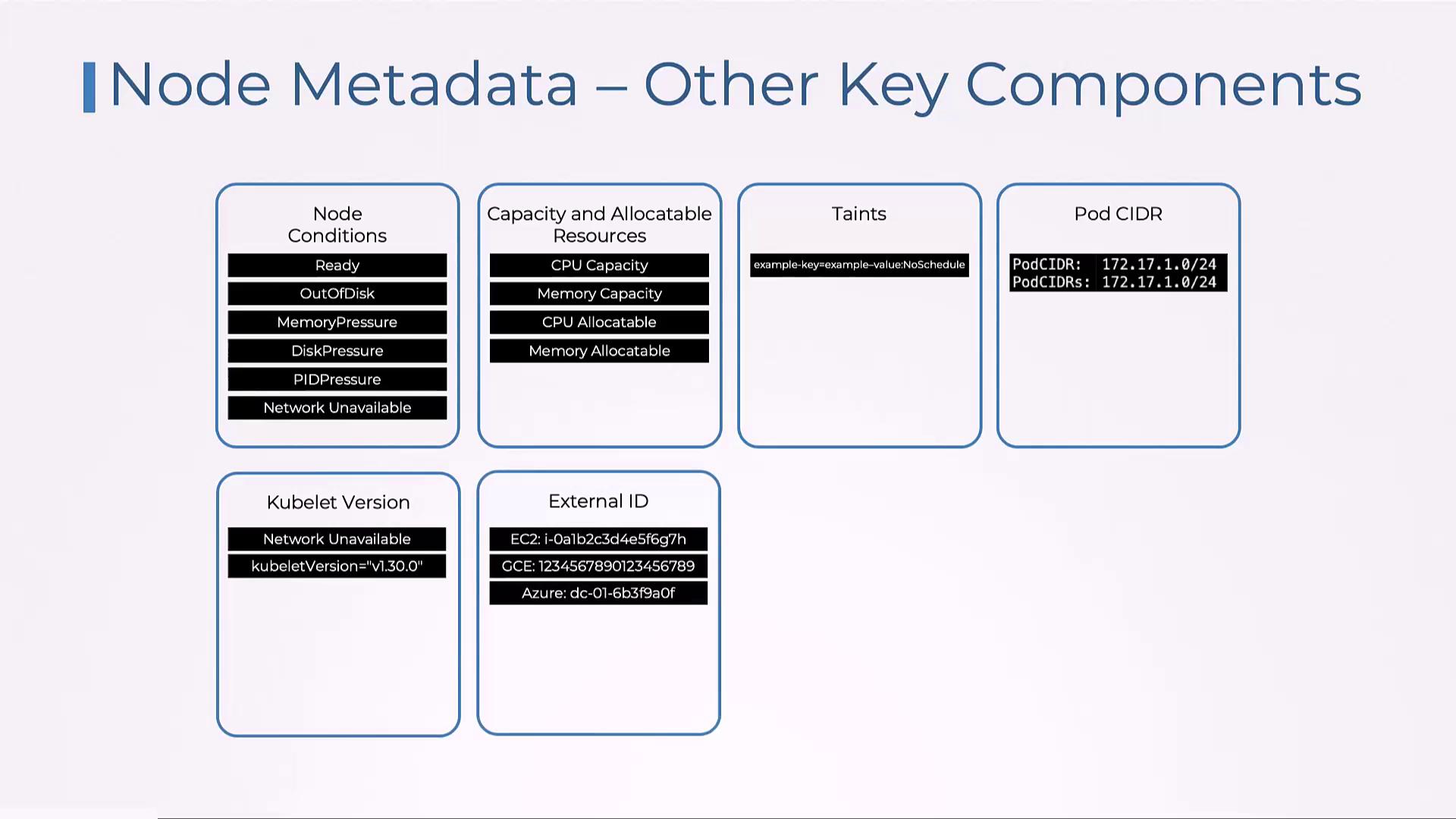Certified Kubernetes Security Specialist (CKS)
Cluster Setup and Hardening
Securing Node Metadata in Kubernetes
In this article, we explore how to secure node metadata in Kubernetes. Protecting node metadata is crucial because it contains sensitive information—such as instance details and credentials—that, if exposed, can pose significant security risks. We will cover the key components of node metadata and discuss best practices to secure this information effectively.
Understanding Node Metadata Through an Analogy
Imagine a Kubernetes cluster as a hotel. Each room in the hotel represents a node, and just like rooms possess various details (room type, occupancy, service notes), nodes have associated metadata. This metadata includes essential attributes such as the node’s unique identity, configuration details, and operational status. In Kubernetes, node metadata is broken down into several components:
- Node Name/Unique ID: The unique identifier for each node.
- Labels: Key-value pairs used to group nodes, such as by geographic region.
- Annotations: Additional data used for debugging, logging, or monitoring.
- Architecture: Information on the hardware architecture (e.g., x86-64).
- System Info: Detailed system data including machine ID, system UUID, boot ID, kernel version, OS details, container runtime version, and Kubernetes component versions.
- Addresses: Lists internal and external IP addresses.
- Other Key Components: Node conditions (e.g., Ready, OutOfDisk), resource capacities, taints and tolerations, CIDRs, kubelet version, and cloud-provider-specific IDs.
Remember
Node metadata not only helps in managing the Kubernetes cluster effectively but also plays a critical role in securing your infrastructure.
Detailed Breakdown of Node Metadata
The diagram below illustrates some of the metadata components associated with a Kubernetes node:

Node Components
- Node Name: The unique identifier for a node.
- Labels: Used to categorize nodes. For example, labels can group nodes by region in a cloud environment. An example of node labels:
Labels:
beta.kubernetes.io/arch: amd64
beta.kubernetes.io/os: linux
kubernetes.io/arch: amd64
kubernetes.io/hostname: node01
kubernetes.io/os: linux
region: us-east-1
- Annotations: These provide additional context for debugging, logging, and monitoring. For instance, the networking tool Flannel uses annotations for its internal configuration:
Annotations:
flannel.alpha.coreos.com/backend-data: '{"VNI":1,"VtepMAC":"a2:bd:8e:41:63:65"}'
flannel.alpha.coreos.com/backend-type: vxlan
flannel.alpha.coreos.com/kube-subnet-manager: "true"
flannel.alpha.coreos.com/public-ip: 192.168.87.255
kubeadm.alpha.kubernetes.io/cri-socket: unix:///var/run/containerd/containerd.sock
node.alpha.kubernetes.io/ttl: "0"
volumes.kubernetes.io/controller-managed-attach-detach: "true"
- Architecture: Indicates the underlying hardware, such as x86-64.
- System Info: Detailed information about the node’s system including operating system, kernel version, container runtime, and more. For example:
System Info:
Machine ID: 69ee5c89434f4d5baea262a6ecc698fe
System UUID: 8ab83d3f-465d-36a9-6ec2-b7e9e7ad6a45
Boot ID: 8059e764-a637-45f0-abd9-36e9a366e719
Kernel Version: 5.15.0-1065-gcp
OS Image: Ubuntu 22.04.4 LTS
Operating System: linux
Architecture: amd64
Container Runtime Version: containerd://1.6.26
Kubelet Version: v1.30.0
Kube-Proxy Version: v1.30.0
- Addresses: Each node has both internal and external IP addresses.
- Other Details: These include node conditions (such as Ready, OutOfDisk, MemoryPressure), resource capacities, configured taints and tolerations, pod CIDRs, kubelet version, and cloud provider-specific external IDs.
The following diagram provides further insight into node metadata:

Additional components such as node conditions, resource capacities, taints, pod CIDRs, kubelet version, and provider-specific IDs combine to offer a comprehensive view of a node within a Kubernetes cluster.

Tip
Securing node metadata is a critical step in safeguarding your Kubernetes environment. Ensure that you follow best practices to restrict access and monitor metadata for any unauthorized modifications.
Conclusion
In this article, we reviewed the essential components of node metadata within Kubernetes and highlighted the importance of securing this sensitive information. In our next lesson, we will delve deeper into the specific challenges associated with node metadata and explore advanced techniques to enhance security across your Kubernetes clusters.
For further reading, consider these resources:
Watch Video
Watch video content